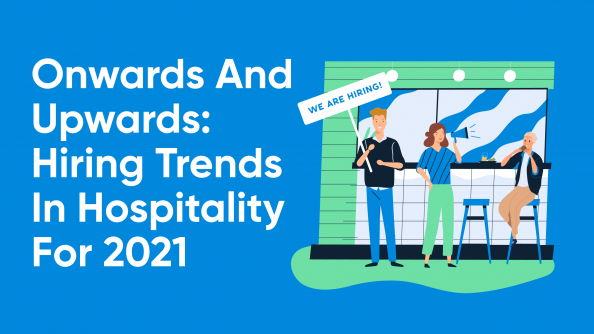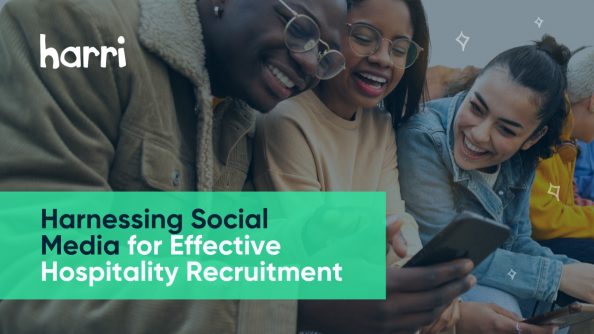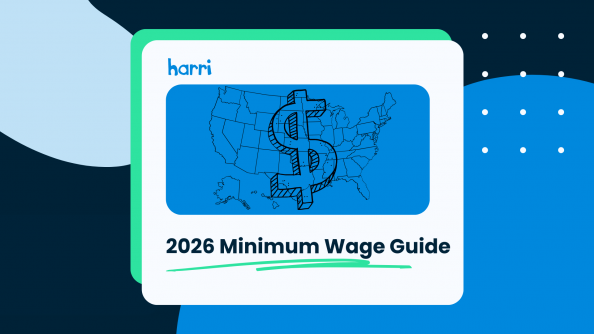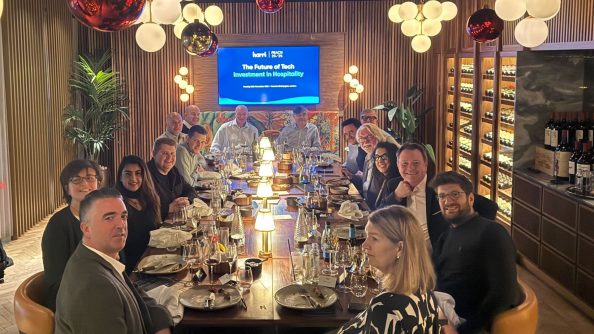How to Communicate Effectively with Hospitality Candidates During the Hiring Process
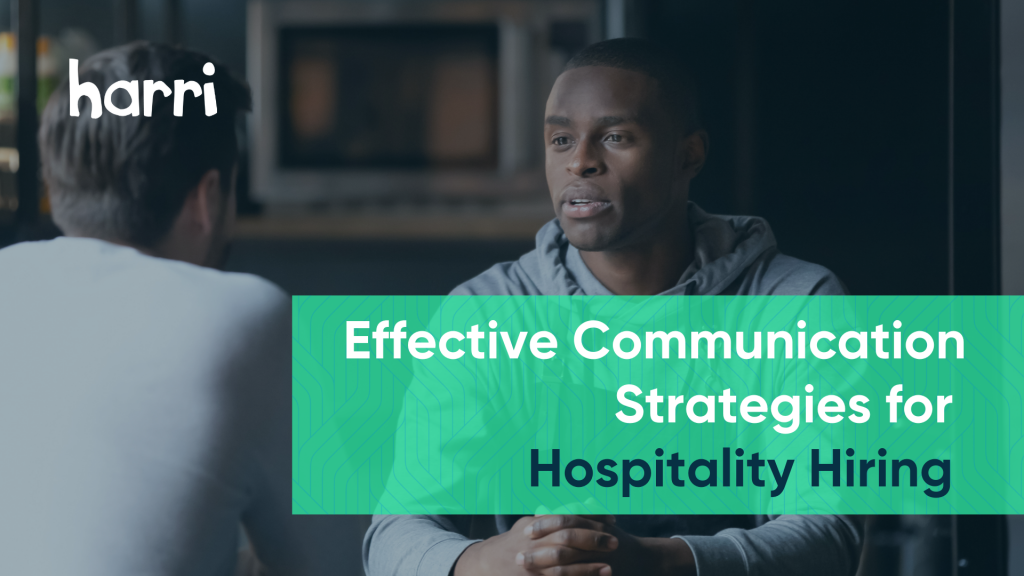
- By Harri Insider Team | January 18, 2024
In hospitality, effective communication is particularly vital due to its direct impact on customer experience. Hospitality relies heavily on personal interactions, making clear and empathetic communication essential not only for operations but also for creating a positive guest experience. This same principle extends to recruitment, where how candidates are communicated with can significantly influence their perception of the brand and their enthusiasm for the role.
From the moment a potential employee learns about your brand, through to their onboarding, every interaction shapes their perception and decision-making. Effective hospitality operators can enhance each stage of the hiring process through strategic communication, ensuring candidates understand the unique culture, opportunities, and benefits of your brand.
Creating a Lasting First Impression in Hospitality Hiring
The initial stage of hiring is crucial for making a memorable first impression, anchored by your brand’s Employee Value Proposition (EVP). This proposition should be a cornerstone in your communication, reflecting what it truly means to work at your establishment and highlighting unique opportunities.
Accessibility is key; candidates have a lot of options and are likely to prioritize employers who have cultivated a frictionless way for candidates to communicate. Make it easy for them to reach out to you, whether it is through your social channels, on your website, email, or a career site. Harri’s technology aids this process by simplifying candidate engagement, allowing seamless initiation of applications through diverse channels like SMS and social media, and managing candidate communications efficiently.
Integrate your EVP consistently across all recruitment materials, employing storytelling with real employee testimonials and actively during candidate interactions. Additionally, consider implementing feedback mechanisms to understand candidate perceptions can further refine your communication strategy, ensuring your EVP is conveyed clearly and engagingly, setting a positive and inviting tone for potential employees.
Develop a concise, engaging ‘Elevator Pitch’ about your brand’s EVP. This pitch should be easily communicated across all candidate touchpoints. An effective Employee Value Proposition (EVP) elevator pitch should encompass the following elements:
✅ Company Culture: Describe the unique aspects of your workplace environment and how they contribute to a positive employee experience.
✅ Career Opportunities: Highlight opportunities for growth, development, and career advancement within the organization.
✅ Benefits and Rewards: Outline the tangible benefits provided, such as competitive salaries, health benefits, vacation policies, and any unique perks.
✅ Work-Life Balance: Emphasize the organization’s commitment to maintaining a healthy work-life balance.
✅ Company Mission and Values: Share the core mission and values that drive the organization, connecting them to the larger purpose and impact of the work.
✅ Team and Community: Mention the sense of community and teamwork that employees can expect, fostering a sense of belonging and collaboration.
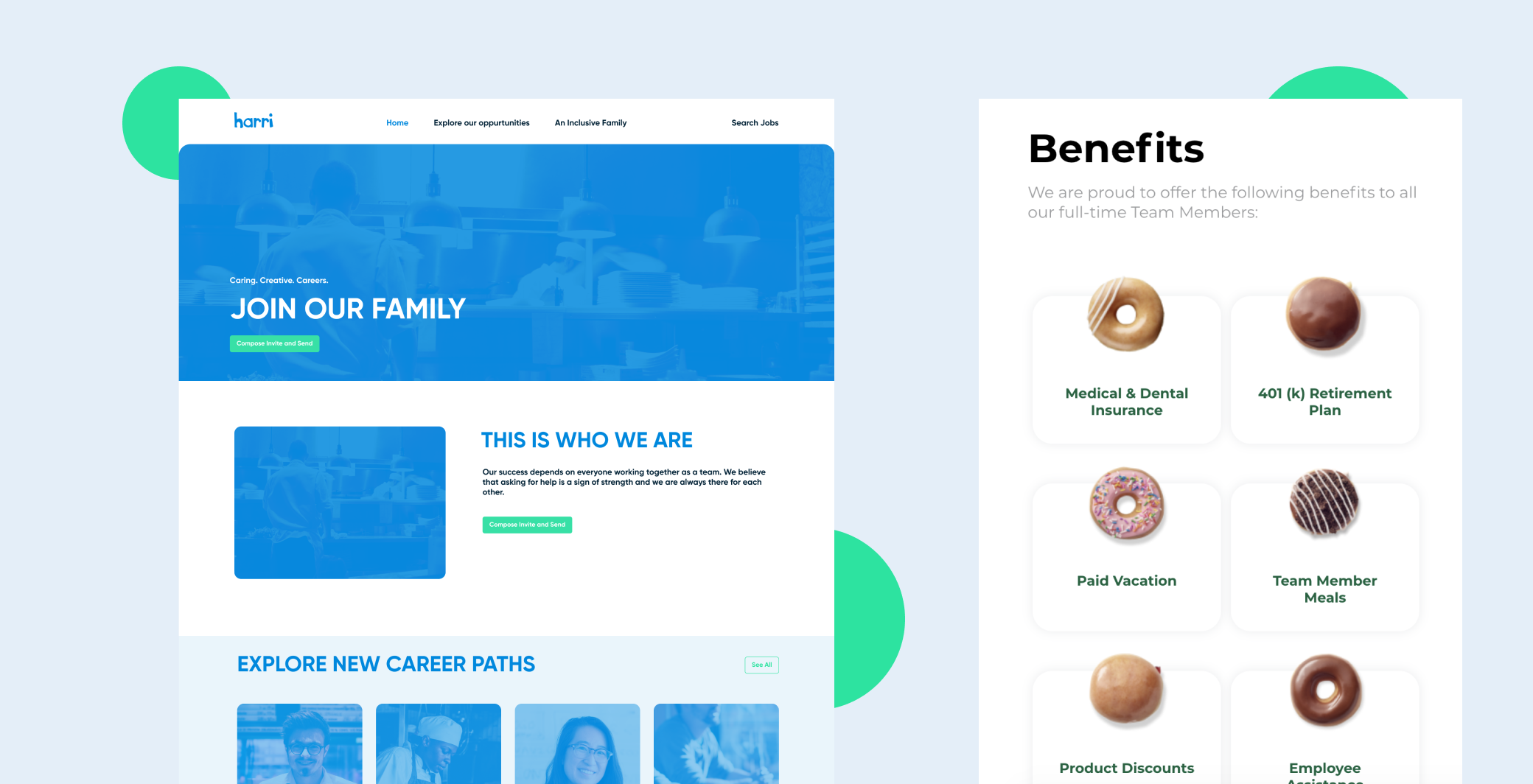
Setting the Tone During the Application Process
Emphasize creating job descriptions that are specific, engaging, and reflective of the role’s true nature and your company culture. Highlighting the unique benefits and opportunities at your establishment can set you apart and give candidates an idea of the value you offer.
Clearly outline the steps involved in the application process, including timelines for interviews, assessments, and decisions. Additionally, keep candidates informed about their application status. Even if there’s no news, a simple update can improve their experience. Automate communications and engagement to implement a recruitment marketing strategy that provides an exceptional candidate experience.
If your application process is mobile-friendly and streamlined, you will likely increase your talent pool significantly. Leading hospitality brands such as Gregrory’s coffee, utilize Harri to to transform their candidate experience by having a one-stop-shop for candidates to apply. “When the process is difficult – and difficult could mean too many buttons to click – you lose people,” shared Jessica Day, VP of People, at Gregory’s Coffee. “We work with our hands and we work directly with people. This is a deskless job, so when something feels administrative or bulky through the lens of technology, it doesn’t work for the type of candidate that we’re really seeking to hire.”
Tailor your communication to reflect the candidate’s experience and interests. Personalized emails or messages will make candidates feel valued. Conversational AI helps you personalize candidate experiences while simultaneously streamlining the application process. This technology can be utilized to automate screening questions, swiftly filtering candidates and focusing on those meeting key criteria.
Sample pre-interview screening questions:
- Describe a time when you had to handle a difficult customer. How did you resolve the situation?
- Can you give an example of how you contributed to a team in a past role?
- How do you handle high-pressure situations, especially during busy hours?
- Tell us about a time you went above and beyond for a guest or customer.
- How do you prioritize tasks when faced with multiple urgent requests?
- Describe your experience with hospitality software or point-of-sale systems.
- What strategies do you use to ensure a positive guest experience?
- Can you share an example of how you handled a misunderstanding or communication challenge at work?
- How do you approach teamwork, particularly in a fast-paced hospitality setting?
Conducting Effective Hospitality Interviews
Use a consistent structure for interviews to ensure all candidates are assessed fairly and thoroughly. Include questions that focus on past experiences and behaviors, as these can be strong indicators of future performance. Encourage candidates to ask questions, making the interview a two-way conversation. This approach can reveal their interest and engagement.
Provide timely feedback and solicit feedback from candidates to not only improve the experience but to also provide valuable insights for process improvement.
If you have to decline candidates, provide notice as soon as possible and leave the door open for future opportunities. A candidate who isn’t the right fit today may be a suitable choice later, plus, you also preserve the possibility of them patronizing your location in the future. Harri’s candidate CRM tool ensures candidates remain in your talent pool, allowing for easy re-engagement when suitable opportunities arise. Harri’s platform further streamlines this process by offering customizable communication templates including the option to automatically send regret emails when a candidate is moved into the ‘rejection’ swimlane. This proactive approach not only keeps your talent pipeline robust but also demonstrates your brand’s commitment to respectful and transparent communication, enhancing your reputation as an employer of choice.
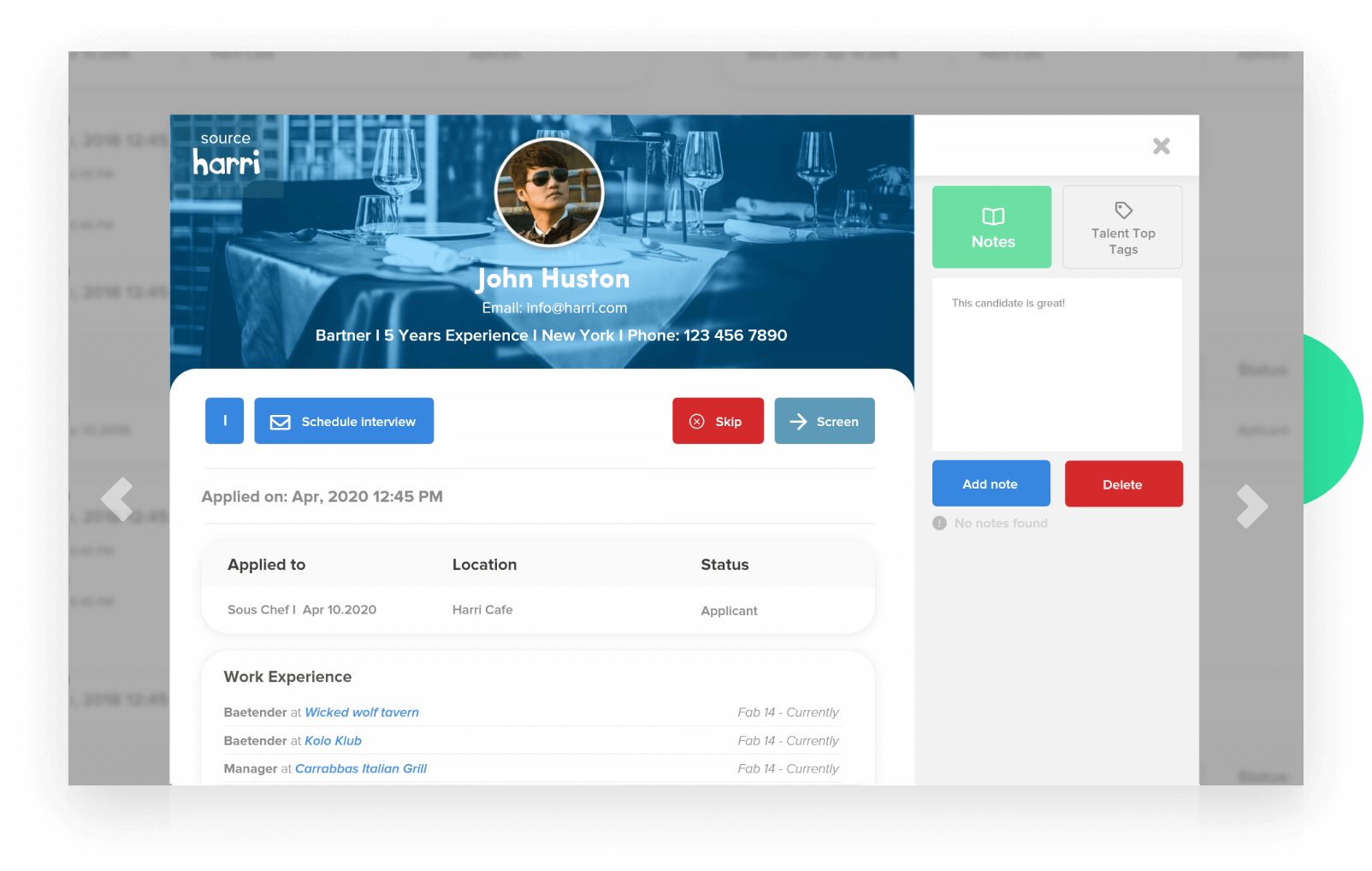
Navigating Offers and Onboarding
Effective communication during the offer and onboarding phase is crucial because it sets expectations, builds engagement, strengthens your brand reputation, and reduces turnover. Hiring managers should call the candidate as soon as they know they are ready to make an offer. Give them a heads up that an offer letter is on the way, and use the phone call to cover pay, benefits, questions, and next steps if the candidate decides to move forward.
What to include in an offer:
Job Title and Role Description
Compensation Structure: Clearly state hourly wage or salary, including tips or bonus structures.
Work Schedule: Outline expected work hours, shift patterns, and flexibility options.
Start Date
Benefits Package: Detail health benefits, retirement plans, vacation policies, and any unique perks.
Reporting Structure: Specify the supervisor or manager.
Uniform/Dress Code Requirements
Onboarding Process Overview: Include training and orientation schedules.
Company Policies: Reference relevant policies, such as guest service standards.
At-Will Employment Clause: If applicable, based on local labor laws.
Prior to an employee’s first day, provide a structured onboarding schedule with key milestones and introductions to the team and company culture. Give them an opportunity to submit all of their documents and fill out any paperwork ahead of time. “Before my first day, using Harri I’d filled out all my forms so that was all done beforehand,” shared a front-of-house team member at Fullers. “It was nice to come in on my first day and get straight into the role, meet all the staff, and learn what the role would be and just get to work.”
Successful recruitment in hospitality hinges on clear, consistent, and engaging communication with candidates. From the initial contact to the onboarding process, every message should reflect your brand’s values and commitment to employee experience. By adopting these strategies, operators can build a strong team aligned with their vision, ultimately enhancing both guest and employee satisfaction in this people-centric industry.
With tools designed to enhance every step from initial contact to onboarding, Harri delivers a seamless and engaging candidate experience. Explore how Harri’s comprehensive product suite will optimize your communication with candidates and enhance the hiring process.












